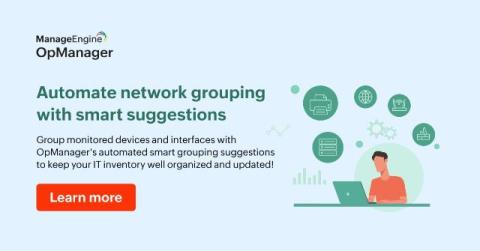Organizing your devices is a no-brainer with OpManager's smart grouping
An organized inventory for monitoring using ManageEngine OpManager is essential for resolving network issues and optimizing performance. Configuring and updating monitoring settings is easier and more efficient when devices and interfaces are organized into subgroups and supergroups. For instance, say you’re monitoring 500 or more devices.











